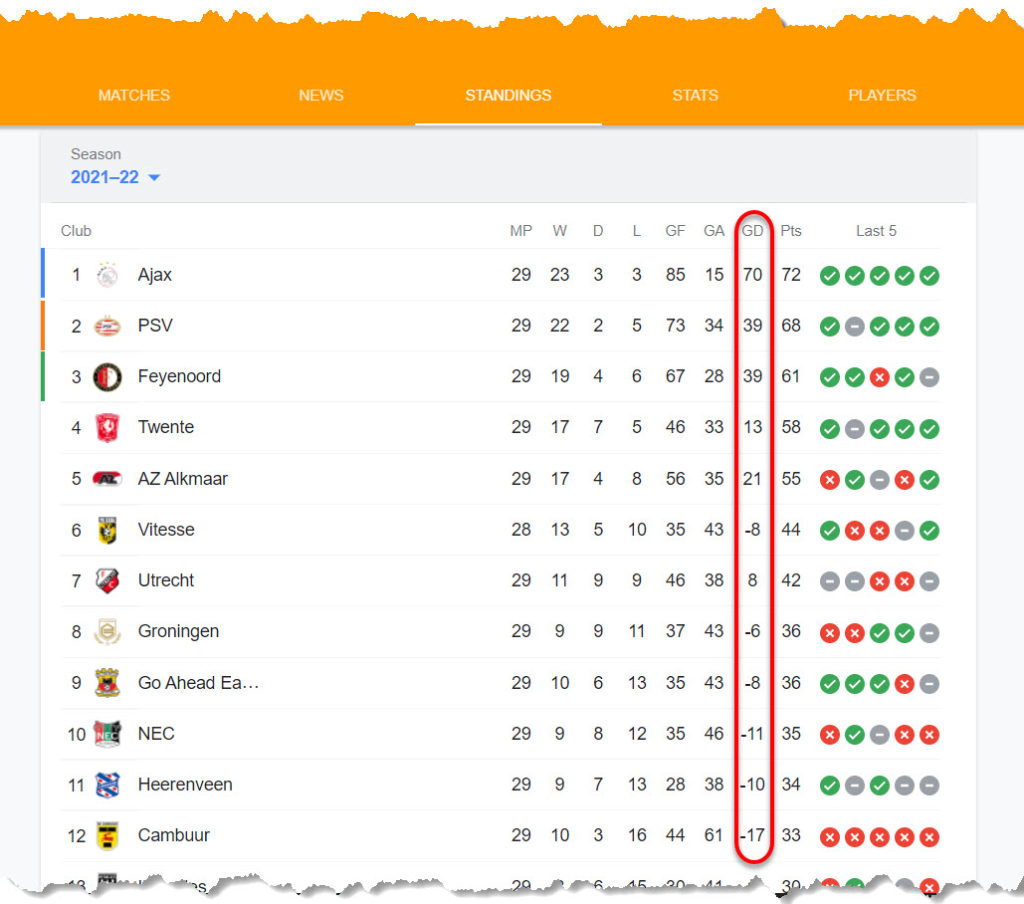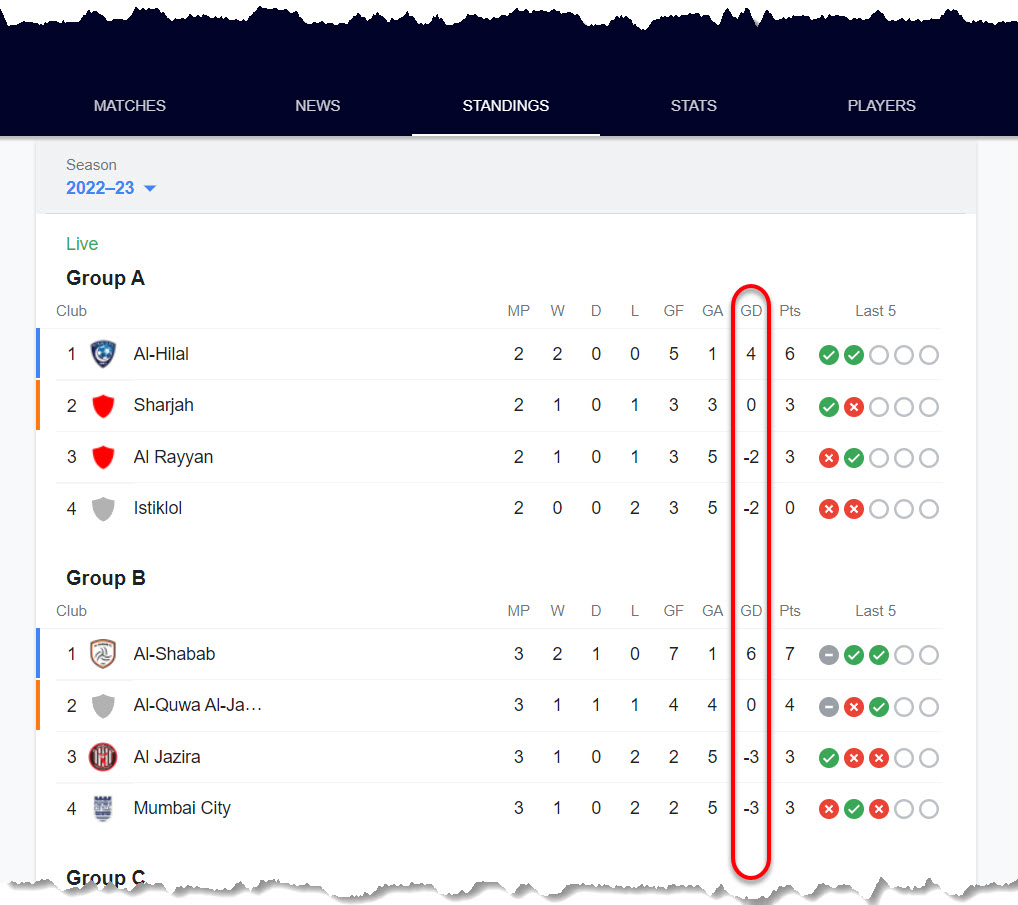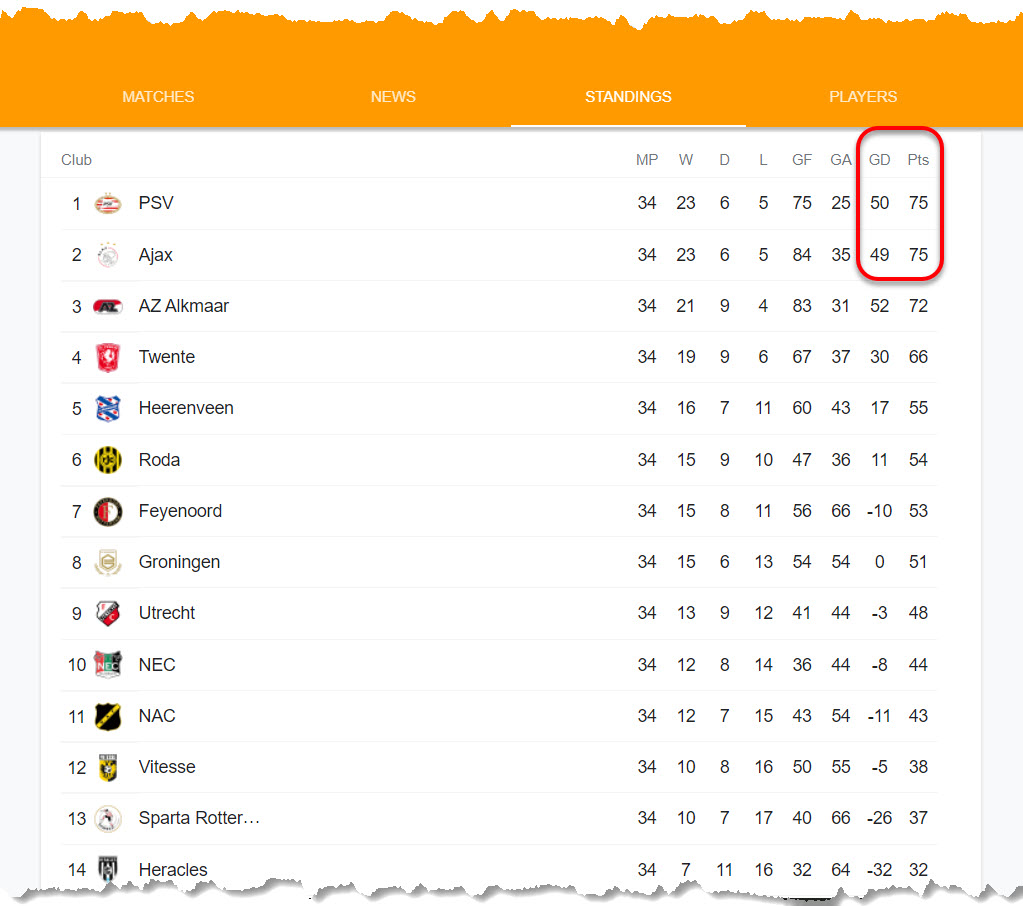Soccer has bits and pieces of complexity that can prove difficult to understand for the average fan of the game.
One particular area that causes a lot of confusion is when it comes to how league tables are interpreted.
Beside each team are a list of performance metrics that play a part in determining who sits at the top of the division and who rests right at the bottom.
You’ve got things like goals scored, points accrued and matches played, which all factor into a club’s league positioning during a campaign.
However, the aspect of GD usually causes the biggest headache!
So, what does GD mean in soccer?
GD is an abbreviation that stands for “Goal Difference”. It’s a performance metric that’s calculated by subtracting the amount of goals that a team has conceded from the number of goals that same team has scored over a single season.
Goal difference figures are also denoted with a plus (+) or minus (-) sign next to them, as in some instances teams could concede more goals than they’ve managed to successfully score.
Now, let’s take a deeper dive into this.
How GD in soccer is calculated
The easiest way to explain how goal difference is calculated is to use a visual demonstration.
For example, consider the current Dutch league standings for the 2021-2022 season.

As you can see, Ajax is clearly a level above the rest of the division, although PSV Eindhoven is following closely behind.
But that’s not what we’re focused on here.
Take a look at the GD column that’s near the far right hand side of the table, in between the respective points and goals against columns.
Ajax has a GD tally of 70.
Now as indicated at the start of this article, the GD figure is obtained by deducting all the goals that a team has conceded from the sum of all the goals that the same team has scored over the season.
In Ajax’s case, this would be achieved by taking their 85 goals scored this campaign and subtracting their 15 goals conceded from it.
So:
Goal Difference = Goals Scored – Goals Conceded
And of course taking away 85 from 15 gives us 70, which you can see is the number indicated in the GD column for Ajax.
Which soccer leagues use goal difference tiebreakers?
Goal difference was initially introduced as a tiebreaker method at the 1970 FIFA World Cup, and its uptake gradually spread to English soccer leagues and the rest of Europe over time.
So you can imagine most of the popular divisions whose matches you get to watch on television incorporate goal difference into their tiebreaker system.
This includes competitions like the:
- Premier League;
- Bundesliga;
- La Liga;
- Ligue 1 UberEats; and
- Serie A
The use of goal difference is so widespread across the world.
Even domestic leagues and cup competitions within the African and Asian continents utilize this metric.

What happens when two teams have equal goal difference?
Different leagues employ the goal difference tiebreaker in different ways.
This article will now illustrate exactly how.
Premier League
The Barclays Premier League has explicitly outlined that goal difference is used as the primary tiebreaker in any event where teams finish the season level on points.
Here’s the exact quote for reference:
“If any clubs finish with the same number of points, their position in the Premier League table is determined by goal difference.”
Source – Premier League
What this means is that, for example, if Manchester City and Liverpool were to finish on exactly the same number of points after the campaign had concluded, then the winner out of the two teams would be determined by looking at their respective goal difference figures.
The team with the higher tally would then be awarded with the title.
Serie A
In the Italian soccer league, the tiebreaker rules are noticeably different.
You see, when two or more teams are level on points once the season has concluded, the first tiebreaker is the head-to-head points record.
Let’s take the example of Inter Milan and Juventus being tied on points at season end.
During the campaign they would have played each other on two separate occasions.
Now, if both games were drawn with an equal amount of goals scored, then the winner would be determined by looking at overall goal difference as the third-level tiebreaker.
Which league titles have been decided by goal difference?
In the 2006 – 2007 Eredivisie season, Ajax and PSV Eindhoven finished level on points, with the latter side crowned as Champions due to having a superior one-goal edge when it came to goal difference.
Take a look below:

And perhaps the most famous instance of a league title decision going right down to the wire was when Manchester City and Manchester United were fighting to emerge victorious in the 2011 – 2012 season.
Both clubs went into their final gameweek 38 fixture with identical points, although The Citizens had a superior goal difference figure of 8 goals over their rivals.
With United leading against Sunderland in the dying minutes and City behind against Queens Park Rangers at the Etihad, it looked like the title was headed to the red side of Manchester.
But the situation was flipped on its head as Manchester City grabbed two goals in the closing moments of their game to seal the title by way of goal difference.
Have a look at the footage below, as it illustrates exactly how these events simultaneously unfolded:
Closing thoughts
That brings us to the end of this informative post on what GD means in soccer.
Hopefully, you’ll have learnt a lot from it.
If you want to supplement your knowledge in this particular area of the game, then check out our other articles on what GF means in soccer and what GA means in soccer.
If you enjoy the content that I create and would like to buy me a coffee, then I’d really appreciate it!
Any money that I earn through this donation will be re-invested into more content for this website.
Additionally, by sending in a donation you’ll also receive a copy of my recently released 190+ page eBook on Soccer Ball Care, as well as be subscribed to our mailing list where you’ll be regularly informed on the latest developments concerning the Soccer Whizz blog.
- Future Icons: Europe’s Emerging Midfield Maestros Set for Glory - December 4, 2023
- Kickstarting a Revolution: How Soccer Transformed the United States Over the Last Four Years - October 7, 2023
- 4-1-4-1 Soccer Formation [Analysis] - September 23, 2023

